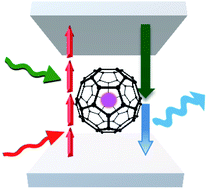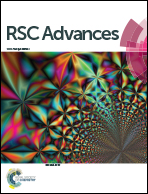Li@C60 thin films: characterization and nonlinear optical properties†
Abstract
Organic materials have attracted considerable attention in nonlinear optical (NLO) applications as they have several advantages over inorganic materials, including high NLO response, and fast response time as well as low-cost and easy fabrication. Lithium-containing C60 (Li@C60) is promising for NLO over other organic materials because of its strong NLO response proven by theoretical and experimental studies. However, the low purity of Li@C60 has been a bottleneck for applications in the fields of solar cells, electronics and optics. In 2010, highly purified Li@C60 was finally obtained, encouraging further studies. In this study, we demonstrate a facile method to fabricate thin films of Li@C60 and their strong NLO potential for high harmonic generation by showing its comparatively strong emission of degenerate-six-wave mixing, a fifth-order NLO effect.



 Please wait while we load your content...
Please wait while we load your content...